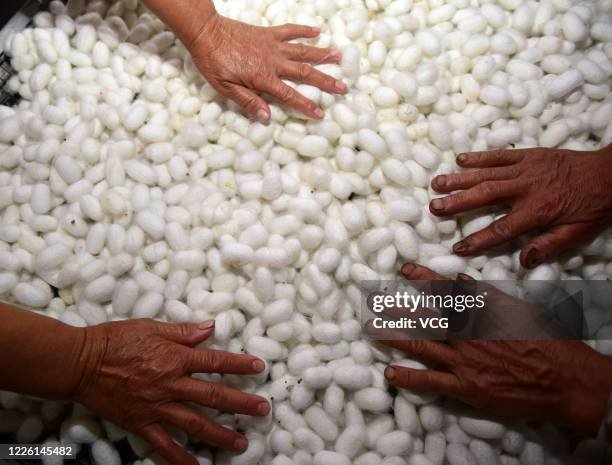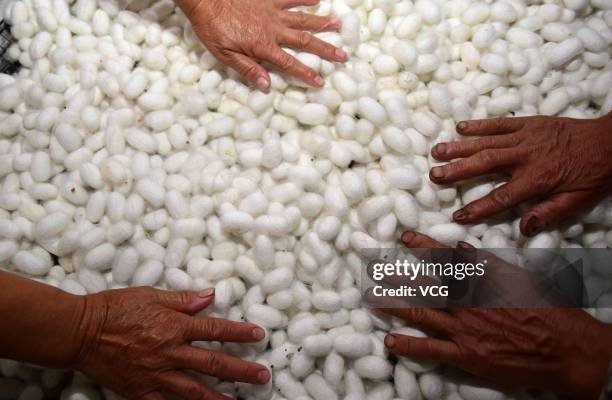
Think of silk harvesting as a blend of art and science. You have to understand the life cycle of the silkworm, the right timing for harvesting, and the techniques to ensure you get high-quality silk fibers. It’s like a dance, where each step matters to achieve that beautiful fabric we’ve all come to love. Let’s dive into the best practices for harvesting silk cocoons, so you can appreciate this amazing process even more.
Understanding the Life Cycle of Silkworms
To effectively harvest silk cocoons, it’s essential to know about the silkworm’s life cycle. Silkworms start as eggs and go through several stages of growth, known as instars. During these stages, they consume a diet primarily of mulberry leaves. After about 26 days, they enter the pupal stage, where they spin their cocoons.
You might be wondering why the life cycle matters. Well, listening to the silkworm’s cues about when to harvest can have a significant impact on the quality of the silk. If you wait too long, the moth might emerge from the cocoon, damaging the silk fibers. So, timing is everything—just like with baking a perfect loaf of bread.
Choosing the Right Time to Harvest
Timing is crucial in the silk harvesting process. Generally, the best time to harvest is when the cocoons are fully formed and before the moths emerge. This usually occurs about 24 to 48 hours after the spinning is complete. The challenge lies in recognizing when that magic moment has arrived.
One way to tell is by observing the color of the cocoons. Freshly spun cocoons are often creamy white or yellowish. As they age and the moth develops inside, they may turn darker. Experienced silk farmers often rely on both sight and timing to determine the optimal harvest time. It’s a bit like knowing just when to pull that chocolate cake from the oven—too early, and it’s gooey; too late, and it’s dry.
Tools and Equipment for Harvesting
Now that you know when to harvest, let’s talk about the tools you’ll need. The right equipment is essential for a successful process. Here’s a quick list of must-haves:
- Sharp scissors or a knife: These will help you cut the cocoons without damaging them.
- Gloves: Wearing gloves will protect your hands and keep oils from your skin off the silk.
- Containers: Use soft, breathable containers to store the harvested cocoons. This prevents crushing or damaging them.
Having these tools ready makes the harvesting smooth and efficient. Think of it like preparing for a camping trip—having the right gear ensures you’re ready for whatever comes your way.
Harvesting Techniques
When it comes to the actual *harvesting* of silk cocoons, the technique matters a lot! Here’s how to do it effectively:
1. Gather your materials: Before starting, lay out your tools in an organized space.
2. Carefully cut the cocoon: Use your sharp scissors or knife to gently cut the cocoon. Be cautious not to pierce the silk inside.
3. Inspect for damage: After cutting, look for any signs that the cocoon has been compromised. You want to ensure you’re only working with high-quality cocoons.
4. Place in containers: Once harvested, carefully place the cocoons in your breathable containers. Avoid stacking them too high to prevent crushing.
Here’s the thing: the gentler you are, the better quality silk you’ll get. Just like handling delicate eggs, you don’t want to rush this part—it’s all about precision and care.
Post-Harvesting Care of Silk Cocoons
Once you’ve harvested the cocoons, the next step is to care for them properly. This is just as important as harvesting itself. Proper treatment after harvesting can significantly affect the quality of your silk fibers.
First, ensure that the cocoons are stored in a cool, dry place. Humidity can damage the silk and even cause it to mold. Second, it’s advisable to keep them in darkness. Light can weaken the fibers and reduce the quality. Think of it like keeping your best shoes in a dust bag—out of sight, out of mind, but always ready for when you need them.
Common Mistakes to Avoid When Harvesting Silk Cocoons
Harvesting silk cocoons isn’t without its challenges. Here are a few common mistakes to steer clear of:
– Harvesting too late: If you wait too long, the silkworm will turn into a moth, ruining the silk.
– Using dull tools: Dull tools can crush the cocoons, leading to damaged silk fibers. Always use sharp instruments for a clean cut.
– Ignoring storage conditions: If you don’t store the cocoons properly, you risk ruining all your hard work.
Avoiding these pitfalls makes the difference between a successful harvest and a disappointing one. It’s a bit like gardening—nurture your plants well, and you’ll reap the rewards.
Why Silk Harvesting Matters
You might be asking yourself, “Why go through all this trouble?” The answer lies in the *quality* of silk. Harvesting cocoons correctly results in finer silk fibers, leading to better textures and durability. Moreover, understanding the process fosters a greater appreciation for the craftsmanship behind silk products.
Silk has a rich history and cultural significance. From ancient China to modern fashion houses, silk threads weave through our stories and styles. By respecting and mastering the harvesting process, you’re part of that ongoing tradition.
In conclusion, harvesting silk cocoons is a fascinating process filled with nuances and practices. By understanding the silkworm life cycle, timing your harvest, using the right tools, and adhering to post-harvesting care, you set the stage for high-quality silk. So, whether you’re a budding silk farmer or just curious about the process, remember that every step counts. Just like every stitch in a fabric, each action can lead to something beautiful and valuable.

